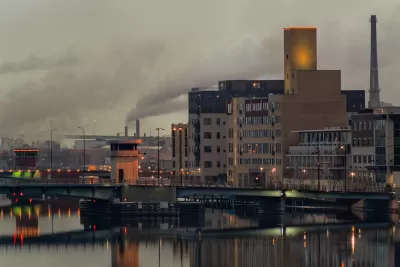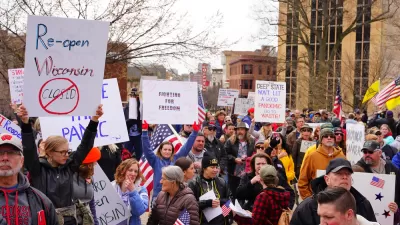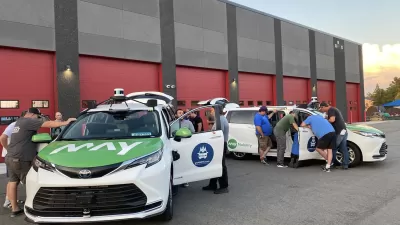Can Rust Belt cities evolve from low-skill factory jobs and paternal company town employers in to more diverse and dynamic entrepreneurial economies?

A new Brookings Institution study looks at factors of successful Rust Belt communities, and how some have evolved from older identities. At work are a number of factors, including universities, the legacy of wise community investing in company towns, and capitalizing on place and history.
Cities and counties that are home to the University of Wisconsin and Notre Dame, for example, have incomes that are higher than their statewide average, as these and other institutions contribute heavily to their respective economies.
Smart economic developers are a boon to their communities. Green Bay, Wisconsin, is leveraging partnerships with the University of Wisconsin-Green Bay's new engineering school and local business start-ups, and also capitalizing on downtown redevelopment and a mixed-use development near legendary Lambeau Field.
Company towns have built-in characteristics that provide a leg up on the competition. Columbus, Indiana, is home of Cummins, whose corporate leadership has resulted in an advanced reputation for high-quality architecture and design. As well, the town is a leader in clean technology.
FULL STORY: A Tale of Two Rust Belts, Can the Midwest's Smaller Communities Succeed?

Alabama: Trump Terminates Settlements for Black Communities Harmed By Raw Sewage
Trump deemed the landmark civil rights agreement “illegal DEI and environmental justice policy.”

Study: Maui’s Plan to Convert Vacation Rentals to Long-Term Housing Could Cause Nearly $1 Billion Economic Loss
The plan would reduce visitor accommodation by 25% resulting in 1,900 jobs lost.

Why Should We Subsidize Public Transportation?
Many public transit agencies face financial stress due to rising costs, declining fare revenue, and declining subsidies. Transit advocates must provide a strong business case for increasing public transit funding.

Paris Bike Boom Leads to Steep Drop in Air Pollution
The French city’s air quality has improved dramatically in the past 20 years, coinciding with a growth in cycling.

Why Housing Costs More to Build in California Than in Texas
Hard costs like labor and materials combined with ‘soft’ costs such as permitting make building in the San Francisco Bay Area almost three times as costly as in Texas cities.

San Diego County Sees a Rise in Urban Coyotes
San Diego County experiences a rise in urban coyotes, as sightings become prevalent throughout its urban neighbourhoods and surrounding areas.
Urban Design for Planners 1: Software Tools
This six-course series explores essential urban design concepts using open source software and equips planners with the tools they need to participate fully in the urban design process.
Planning for Universal Design
Learn the tools for implementing Universal Design in planning regulations.
Smith Gee Studio
Alamo Area Metropolitan Planning Organization
City of Santa Clarita
Institute for Housing and Urban Development Studies (IHS)
City of Grandview
Harvard GSD Executive Education
Toledo-Lucas County Plan Commissions
Salt Lake City
NYU Wagner Graduate School of Public Service




























